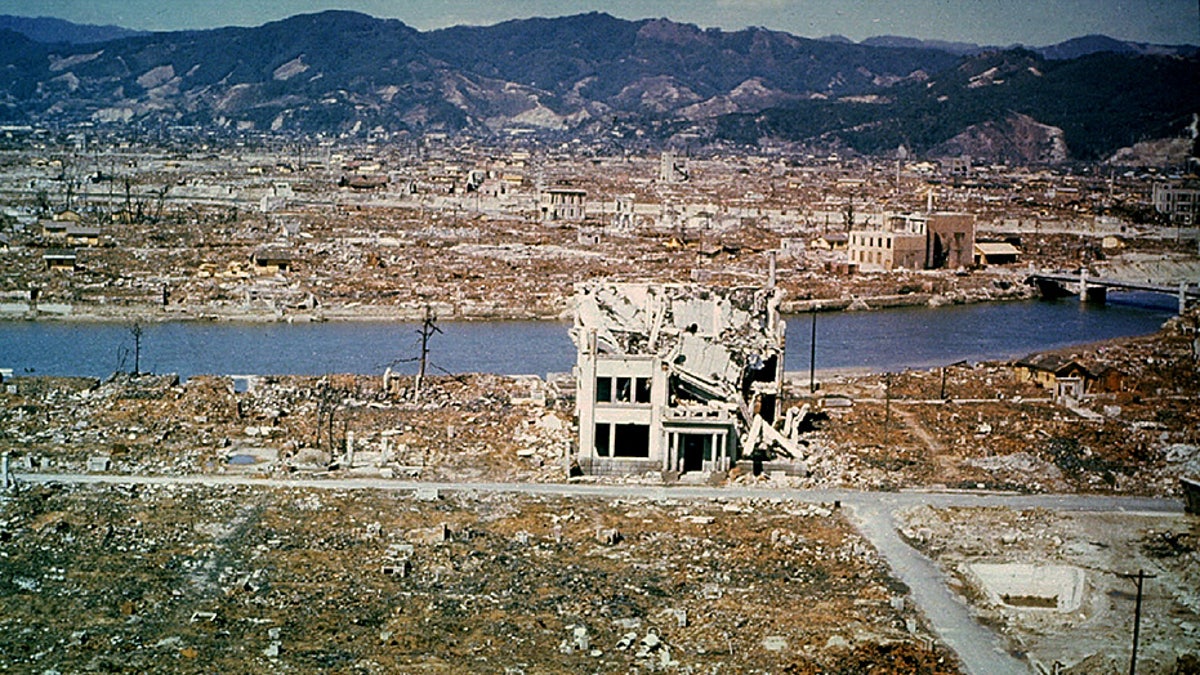
The city of Hiroshima, Japan, was bombed by the United States in 1945. (Reuters)
A jawbone from one of the victims of the 1945 bombing of Hiroshima, Japan, shows the high amount of radiation a person who was in the area may have absorbed.
Brazilian physicist Sergio Mascarenhas went to Hiroshima 27 years after the bombing to see if he could obtain remains from victims and test their radiation level, The Washington Post reported. “Exposure to radiation makes human bone magnetic, and that magnetic memory existed in the bones of atomic bombing victims years after the explosion,” Mascarenhas said.
To prove his point, in 1972 the physicist obtained samples of bones from a few victims, including a jawbone from a person who was less than a mile away from where the bomb, code-named "Little Boy," dropped.
WOOD FROGS’ WINTER SURVIVAL MAY DEPEND ON HOLDING IN URINE: STUDY
About 90,000 to 160,000 people died after the 1945 bombing in Hiroshima.
Mascarenhas was able to test the bones and estimate how much radiation they absorbed, but technology at the time could not help him decipher specifically how much radiation was present.
The physicist took the remains to his native country, where they remained in storage for decades until two other Brazilian scientists recently decided to test them again with better technology.
Oswaldo Baffa, one of the scientists, said the jawbone showed 9.46 grays of radiation. Grays is the unit of measure for the “amount of radiation absorbed by an object or person,” the Post reported.
The finding means the amount of radiation found in the jawbone was more than enough to kill a person. About 5 grays of whole body radiation can kill a person. When a person undergoes radiation treatment for cancer, about 2 to 3 grays of radiation are centered on a specific part of the body.
The scientists believed their data is “timely and significant” due to the number of threats countries, including the U.S., receive regarding atomic bombs.
“Imagine someone in New York planting an ordinary bomb with a small amount of radioactive material stuck to the explosive,” Baffa told Brazilian media. “Techniques like this can help identify who has been exposed to radioactive fallout and needs treatment.”
A NUCLEAR REACTOR FOR SPACE MISSIONS PASSES FINAL MAJOR GROUND TESTS
The scientist said he tested the bone by crushing a part of it with a mortar and pestle and exposing portions of the sample to various levels of radiation. The sample was then tested using a spectrometer and other techniques to determine the amount of radiation.
Mascarenhas, now in his 90s and retired, has not given up on his research.
“The measurement we obtained in this latest study is more reliable and up-to-date than the preliminary finding, but I’m currently evaluating a methodology that’s about a thousand times more sensitive than [electronic] spin resonance,” he told Brazilian media. “We’ll have news in a few months.”
